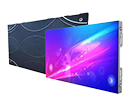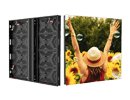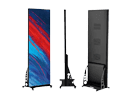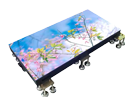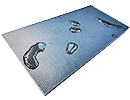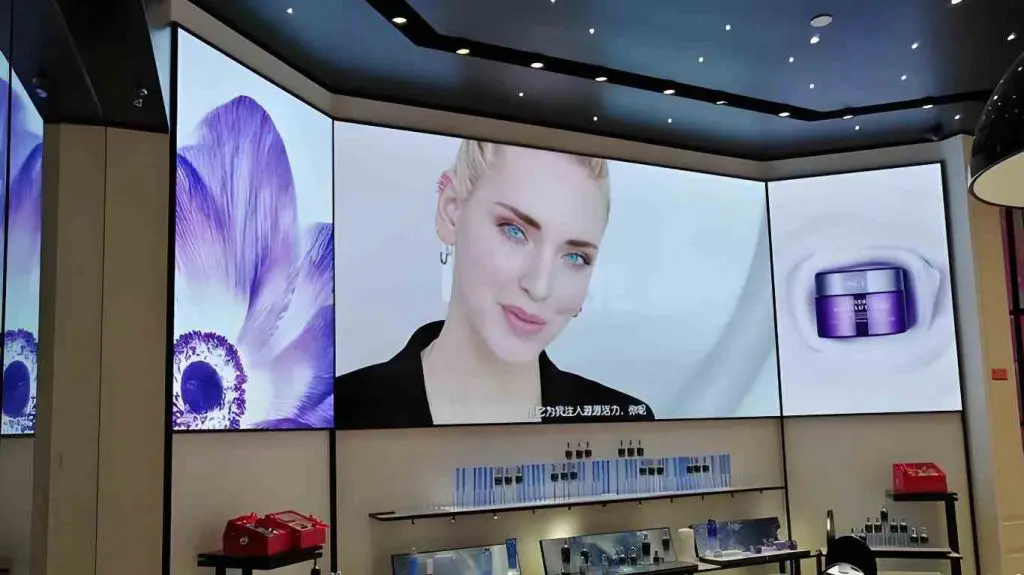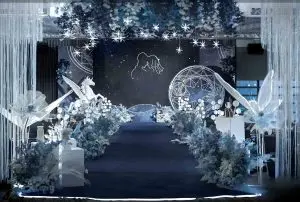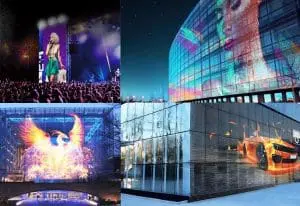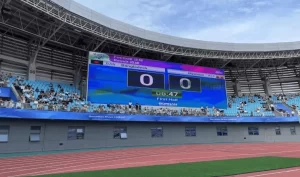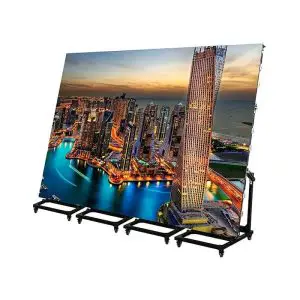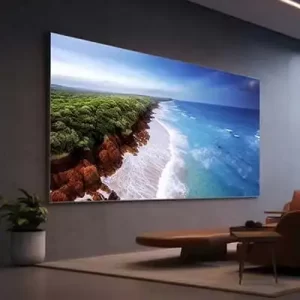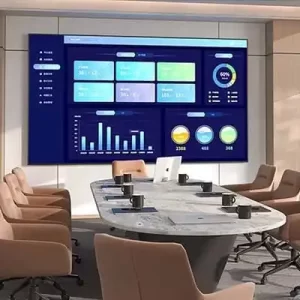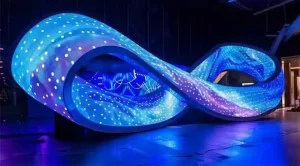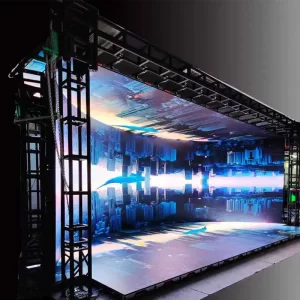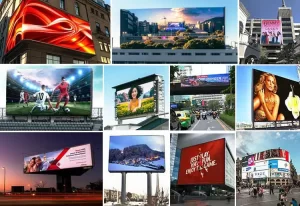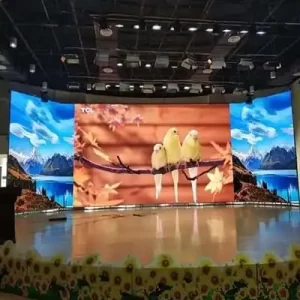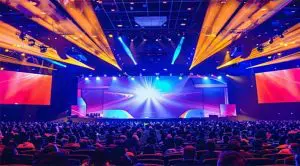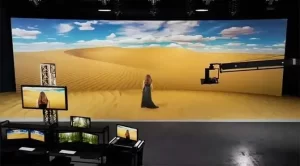LED Display Screen: Ultimate Guide to Types, Features, Benefits, Applications, Costs, and Buying Tips
An LED display screen is one of the most versatile and high-impact digital display solutions for a wide range of applications, including advertising, events, retail, corporate settings, and entertainment venues. With their vivid visuals, energy efficiency, and customizable options, LED display screens have become a preferred choice for businesses aiming to captivate audiences and improve engagement. The global LED display screen market is projected to reach $31.5 billion by 2027, growing at a CAGR of 7.5% (source: MarketsandMarkets), driven by advancements in resolution, durability, and smart integration.
What Is an LED Display Screen?
An LED display screen is a digital display that uses Light Emitting Diodes (LEDs) to render text, images, videos, and animations. Unlike traditional LCD or plasma screens, which rely on backlighting, LED display screens generate light directly from the diodes, resulting in superior brightness, color accuracy, and energy efficiency. These screens are composed of modular panels that can be scaled to any size, making them ideal for both small-scale retail displays and massive outdoor billboards.
The technology works by arranging red, green, and blue (RGB) LEDs into pixels, which combine to form full-color images. LED display screens are categorized by their environment (indoor vs. outdoor), resolution (pixel pitch), and design (fixed, flexible, or transparent). Their durability—withstanding temperatures from -40°C to 70°C and offering lifespans up to 100,000 hours—makes them a cost-effective alternative to older displays.
According to a 2023 report by Fortune Business Insights, LED display screens dominate 65% of the digital signage market, thanks to falling costs (down 20% in the last five years) and rising demand in smart cities and e-commerce. For instance, brands like Nike use LED display screens in flagship stores to create immersive shopping experiences, boosting sales by 15-25%.
Types of LED Display Screens
Selecting the right type of LED display screen is crucial for optimal performance. Below, we break down the most popular types, including their applications, features, and ideal use cases:
- Indoor LED Display
Applications: Retail stores, corporate offices, conference rooms, shopping malls, and stage backdrops.
Features:- High resolution with fine pixel pitches (P1.2–P4) for detailed visuals at close range.
- Lightweight panels (5-10 kg/m²) for easy wall, ceiling, or freestanding installation.
- Brightness levels of 800–1,500 nits, optimized for controlled lighting.
Best For: Environments where viewers are 1-5 meters away, like lobbies or trade show booths.
- Outdoor LED Screens
Applications: Digital billboards, stadiums, transportation hubs, and outdoor events.
Features:- Ultra-high brightness (5,000–10,000 nits) for sunlight visibility.
- Larger pixel pitches (P4–P10) for long-distance viewing (10-100 meters).
- IP65+ weatherproofing against rain, dust, UV rays, and extreme temperatures.
Best For: High-traffic areas requiring 24/7 durability, such as highways or public squares.
- Transparent LED Screens
Applications: Glass walls, storefronts, and architectural designs.
Features:- Transparency levels of 50%–90%, allowing natural light to pass through while displaying content.
- Sleek, frameless design for seamless integration with windows or facades.
- Pixel pitches (P3–P7) balancing clarity and see-through effect.
Best For: Retail and modern buildings where aesthetics and functionality merge.
- Flexible LED Screens
Applications: Curved walls, creative installations, and immersive experiences.
Features:- Bendable panels with adjustable curvature (radius 1-5 meters) for unique shapes like arcs or cylinders.
- High resolution (P2–P6) maintaining image quality on non-flat surfaces.
- Lightweight and thin (under 5mm thick) for versatile mounting.
Best For: Artistic or architectural projects, such as museum exhibits or stage designs.
- Rental LED Screens
Applications: Temporary events like concerts, exhibitions, and trade shows.
Features:- Portable, lightweight modules with quick-lock systems for fast assembly/disassembly (under 1 hour).
- Customizable configurations (P2.5–P6) for varying event sizes.
- Built-in transport cases for mobility and protection.
Best For: Short-term use where flexibility and cost-efficiency are key.
| Type | Pixel Pitch Range | Brightness (Nits) | Ideal Applications | Average Cost per m² (USD) |
|---|---|---|---|---|
| Indoor LED Display Screen | P1.2–P4 | 800–1,500 | Retail, Offices | $800–$2,000 |
| Outdoor LED Display Screen | P4–P10 | 5,000–10,000 | Billboards, Stadiums | $1,000–$3,000 |
| Transparent LED Display Screen | P3–P7 | 2,000–5,000 | Storefronts, Architecture | $1,500–$3,500 |
| Flexible LED Display Screen | P2–P6 | 1,000–4,000 | Curved Installations | $1,200–$2,500 |
| Rental LED Display Screen | P2.5–P6 | 1,000–6,000 | Events, Trade Shows | $100–$300 (per day) |
Key Features of LED Display Screens

LED screens stand out due to their advanced engineering. Here are the essential features:
- High Brightness and Visibility: Indoor models offer 800–1,500 nits, while outdoor versions reach 10,000 nits for sunlight readability.
- Customizable Sizes and Shapes: Modular panels allow infinite configurations, from 1m² kiosks to 500m² video walls.
- Durability and Weather Resistance: IP65+ ratings for outdoor use; anti-vibration and UV-protected materials ensure longevity.
- Energy Efficiency: Consume 200–500 W/m², 40-60% less than LCDs (source: U.S. Department of Energy), with eco-certifications like Energy Star.
- Seamless Visuals and High Refresh Rate: Gapless assembly and ≥3,840 Hz refresh rates prevent flickering for smooth video playback.
- Longevity and Low Maintenance: Up to 100,000 hours lifespan; front-access panels simplify repairs.
- Smart Integration: Support for HDMI, Wi-Fi, 4G/5G, and cloud software for remote content management and analytics.
- Interactive Capabilities: Touch-sensitive options for user engagement in retail or events.
These features make LED display screens adaptable to diverse needs, with studies showing 30% higher audience retention compared to static displays (source: Nielsen).
Benefits of LED Display Screens
LED display screens provide transformative benefits across industries:
- Vivid and Immersive Visuals: High contrast ratios (up to 10,000:1) and color accuracy (16 million colors) create captivating content.
- Energy and Cost Savings: Reduce power bills by 50% and eliminate printing costs for ads, achieving ROI in 6-18 months.
- Durability in Harsh Environments: Weatherproof designs last 10+ years, minimizing replacements.
- Customization and Scalability: Tailor to any size or shape, with modular upgrades for future-proofing.
- Enhanced Engagement: Dynamic content boosts interaction by 35% (per Journal of Marketing), ideal for marketing.
- Eco-Friendly Design: Low emissions and recyclable components align with sustainability goals.
- Versatile Integration: Compatible with AI, AR, and IoT for smart applications like real-time data displays.
- High ROI for Businesses: In retail, LED display screens increase sales by 20-40% through eye-catching promotions (source: Retail Dive).
For example, Coca-Cola’s global campaigns using outdoor LED screens have driven brand recall up 45%.
Applications of LED Display Screens
LED screens are applied in countless scenarios, enhancing communication and entertainment:
- Advertising and Marketing
- Digital Billboards: Outdoor LED screens for high-traffic ads, generating $10,000+ monthly revenue.
- Retail Displays: Promote products with animations in stores.
- Events and Entertainment
- Concerts and Festivals: Rental LED screens for live feeds and backdrops.
- Sports Arenas: Scoreboards and replays on massive video walls.
- Corporate and Business
- Conference Rooms: Indoor LED screens for presentations and video calls.
- Reception Areas: Branding and welcome messages.
- Public Spaces
- Transportation Hubs: Schedules and alerts in airports or stations.
- Museums and Exhibitions: Interactive exhibits with transparent LED screens.
- Architectural and Creative Installations
- Building Facades: Flexible LED screens for dynamic lighting.
- Interior Design: Decorative elements in hotels or offices.
Case Study: The Burj Khalifa in Dubai uses over 1,000m² of LED screens for light shows, attracting 10 million tourists annually and boosting local economy by $500 million (source: Dubai Tourism).
Key Specifications of LED Screens
| Specification | Description | Indoor Example | Outdoor Example |
|---|---|---|---|
| Pixel Pitch | Distance between LEDs affecting resolution | P1.2–P4 (high-res) | P4–P10 (long-distance) |
| Brightness | Visibility in light (nits) | 800–1,500 | 5,000–10,000 |
| Refresh Rate | Smoothness (Hz) | ≥3,840 | ≥3,840 |
| Viewing Angle | Clarity from sides | 140°–160° | 140°–160° |
| IP Rating | Weather resistance | IP54 | IP65+ |
| Power Consumption | Energy use (W/m²) | 200–400 | 400–600 |
| Lifespan | Operational hours | 100,000 | 100,000 |
How to Choose the Right LED Display Screen
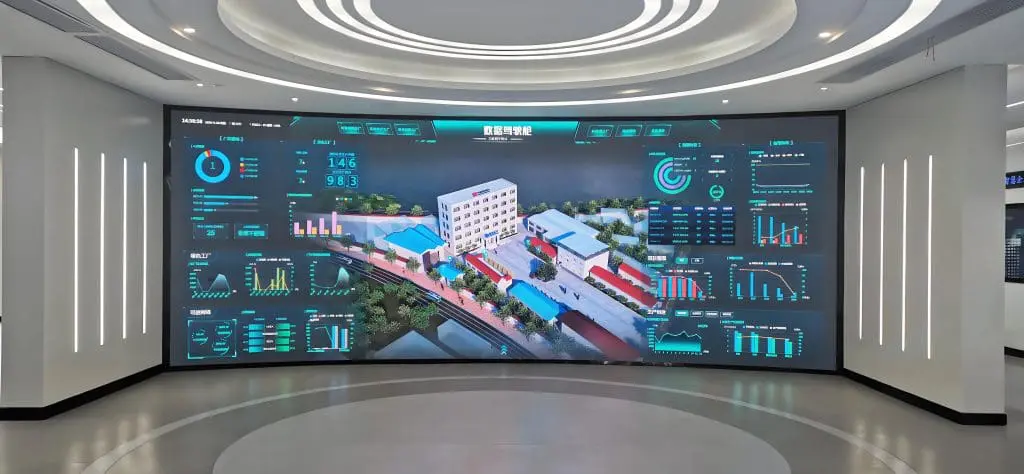
- Determine the Purpose: Advertising? Events? Select indoor/outdoor based on use.
- Choose Pixel Pitch: Smaller for close viewing; larger for distance.
- Consider Brightness and Environment: 5,000+ nits for outdoor.
- Evaluate Size and Customization: Modular for flexibility.
- Check Durability and Certifications: IP65+ for outdoor; CE/RoHS for safety.
- Assess Energy Efficiency: Low-consumption models for cost savings.
- Verify Support and Warranty: 2–3 years; after-sales service essential.
Installation Guide for LED Display Screens
- Site Survey: Assess location, power, and structural support.
- Panel Assembly: Connect modules; calibrate for uniformity.
- Mounting: Use brackets or frames; ensure weatherproof seals for outdoor.
- Wiring and Testing: Integrate content system; test brightness and connectivity.
- Maintenance Plan: Schedule cleanings and updates.
Costs: $5,000–$50,000 for professional install.
Costs of LED Display Screens
LED display screen costs depend on type and specs (2023 estimates):
- Cost Per Square Meter
Pixel Pitch Use Case Cost per m² (USD) P0.6–P2.5 High-res indoor $2,000–$3,500 P2.5–P5 Medium res (indoor/outdoor) $1,000–$2,500 P6–P10 Outdoor advertising $700–$1,500 - Other Costs: Installation ($5,000–$50,000), control systems ($2,000–$10,000), maintenance (5-10% annually).
ROI: Recoup in 6-12 months via ads.
Future Trends in LED Screens
- Micro-LED Advancements: Finer pitches for 8K+.
- AI and IoT Integration: Smart content personalization.
- Sustainable Designs: Eco-materials reducing energy 30%.
- Flexible and Transparent Hybrids: For AR/VR.
FAQ: Common Questions About LED Display Screens
- What is an LED display screen? A diode-based display for vivid visuals.
- What are the benefits of LED display screens? Energy efficiency and durability.
- How much does an indoor LED display screen cost? $300–$2,000 per m².
- What is the best LED display screen for advertising? Outdoor models with high brightness.
- Are outdoor LED display screens waterproof? Yes, IP65+ rated

